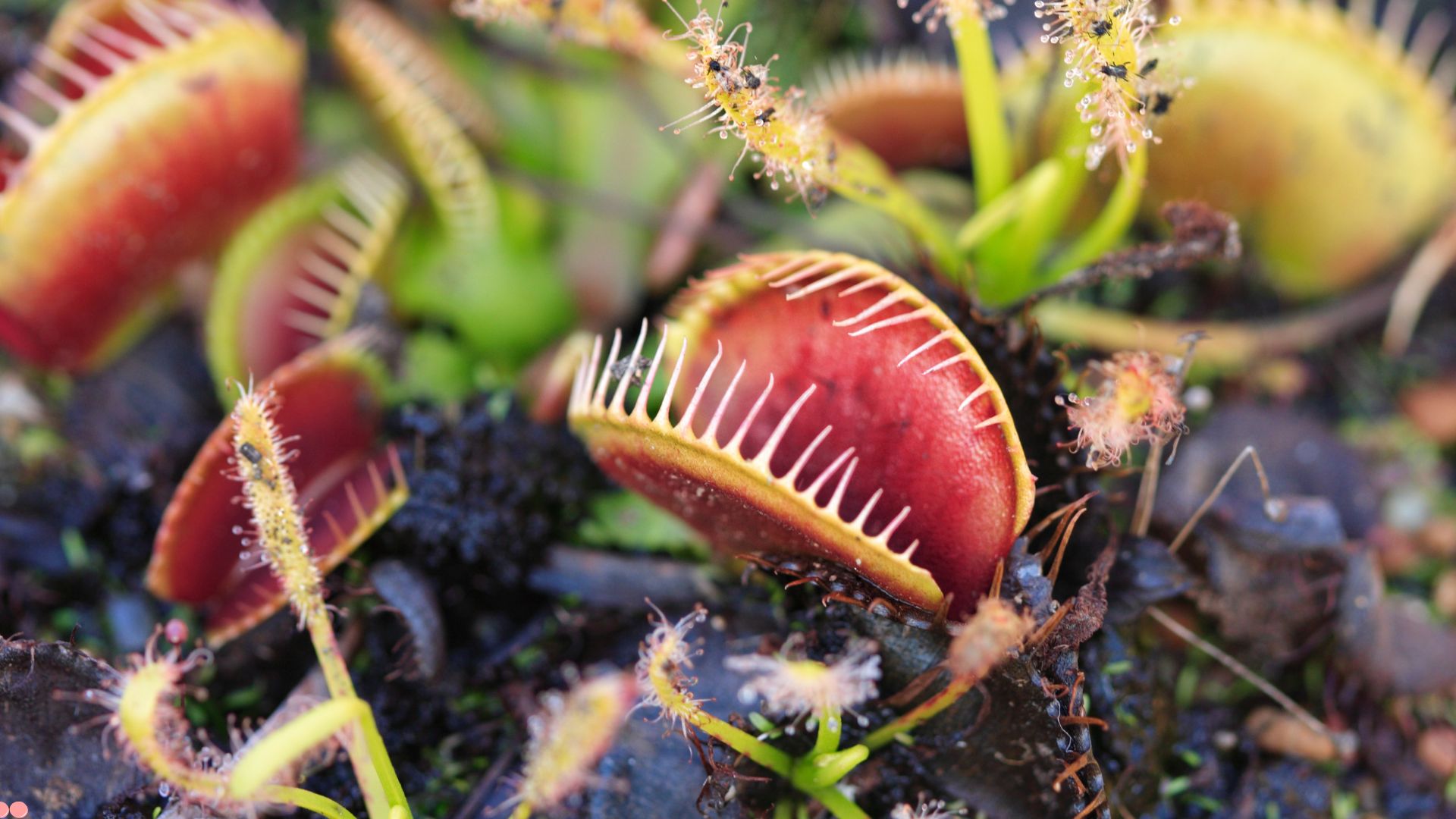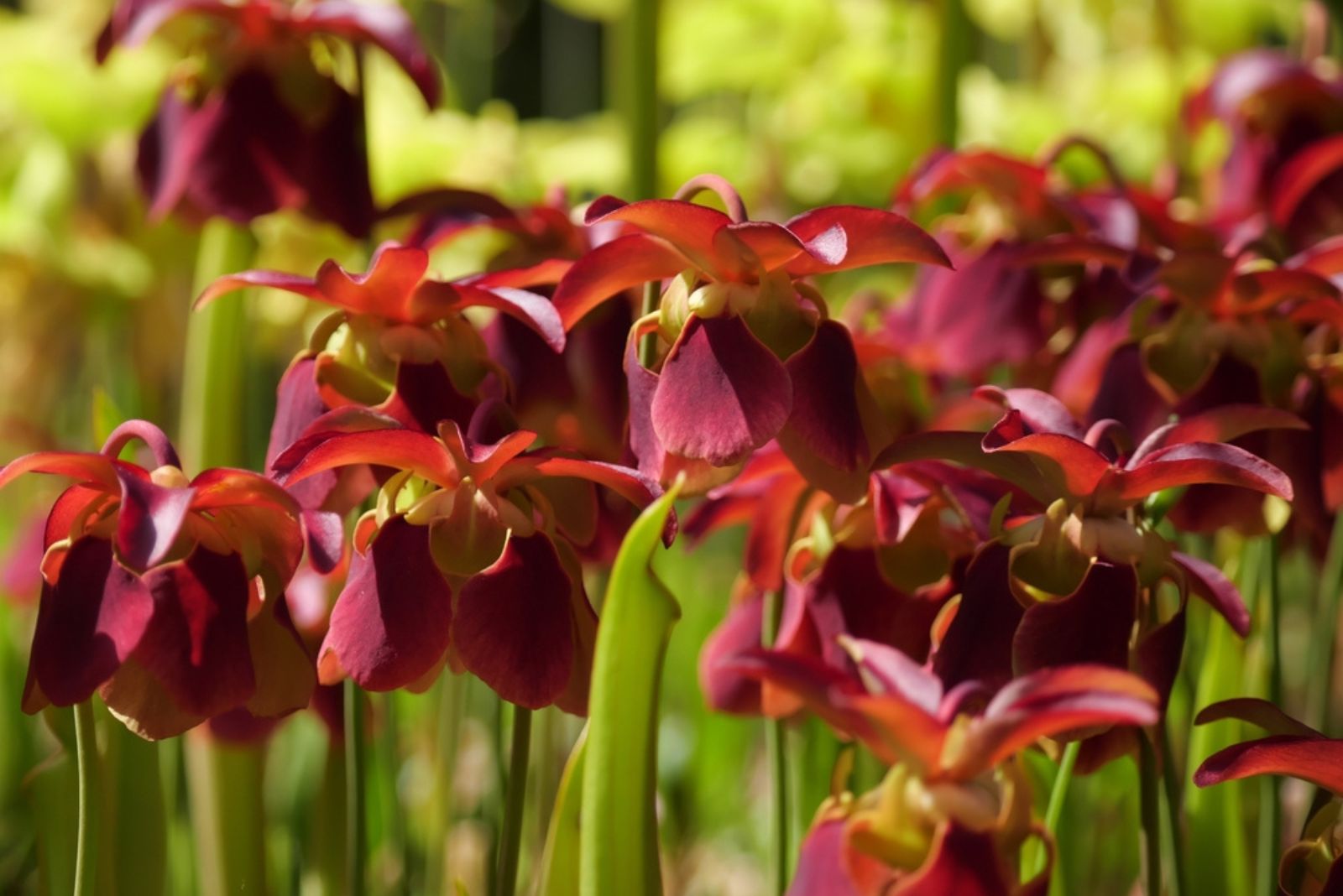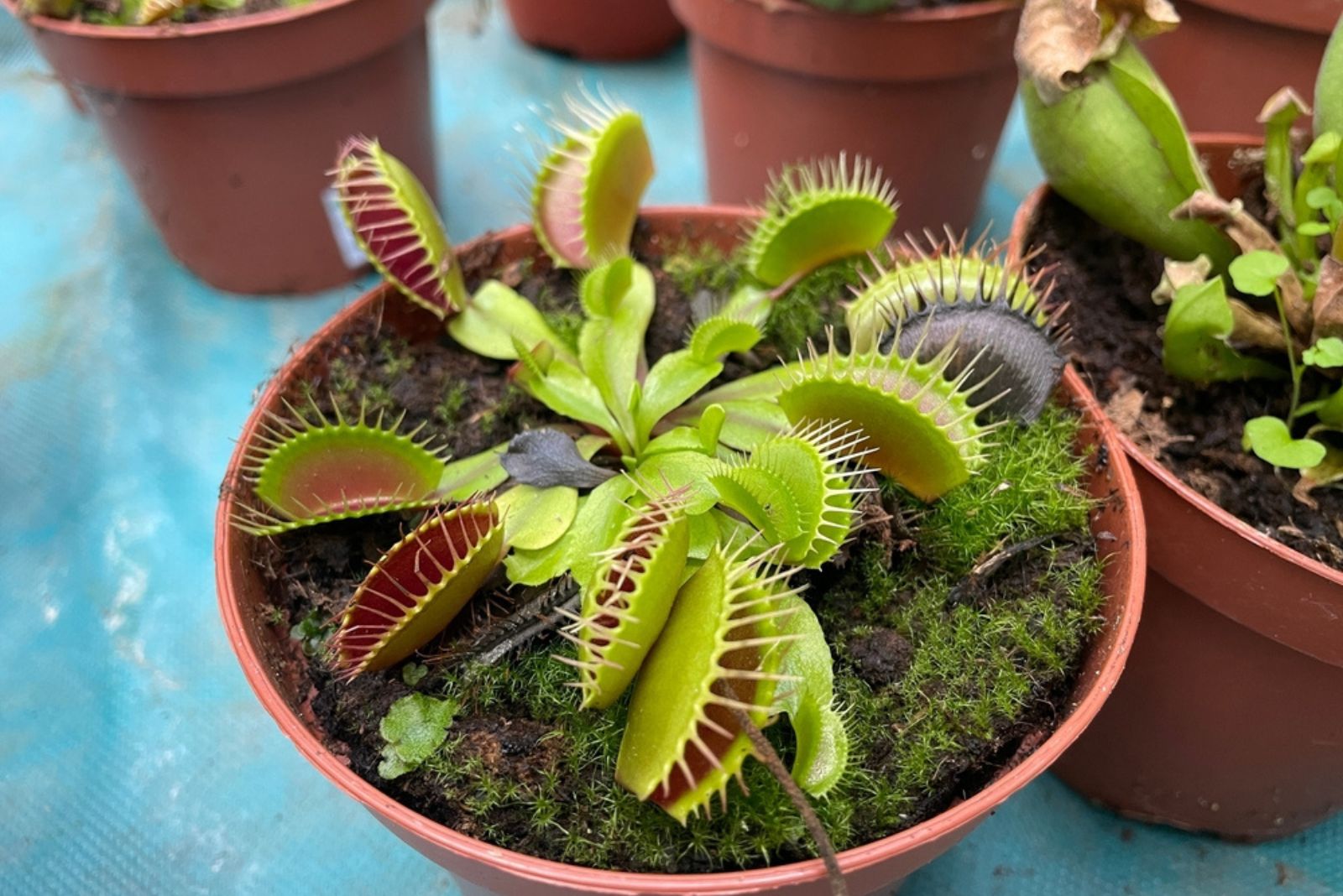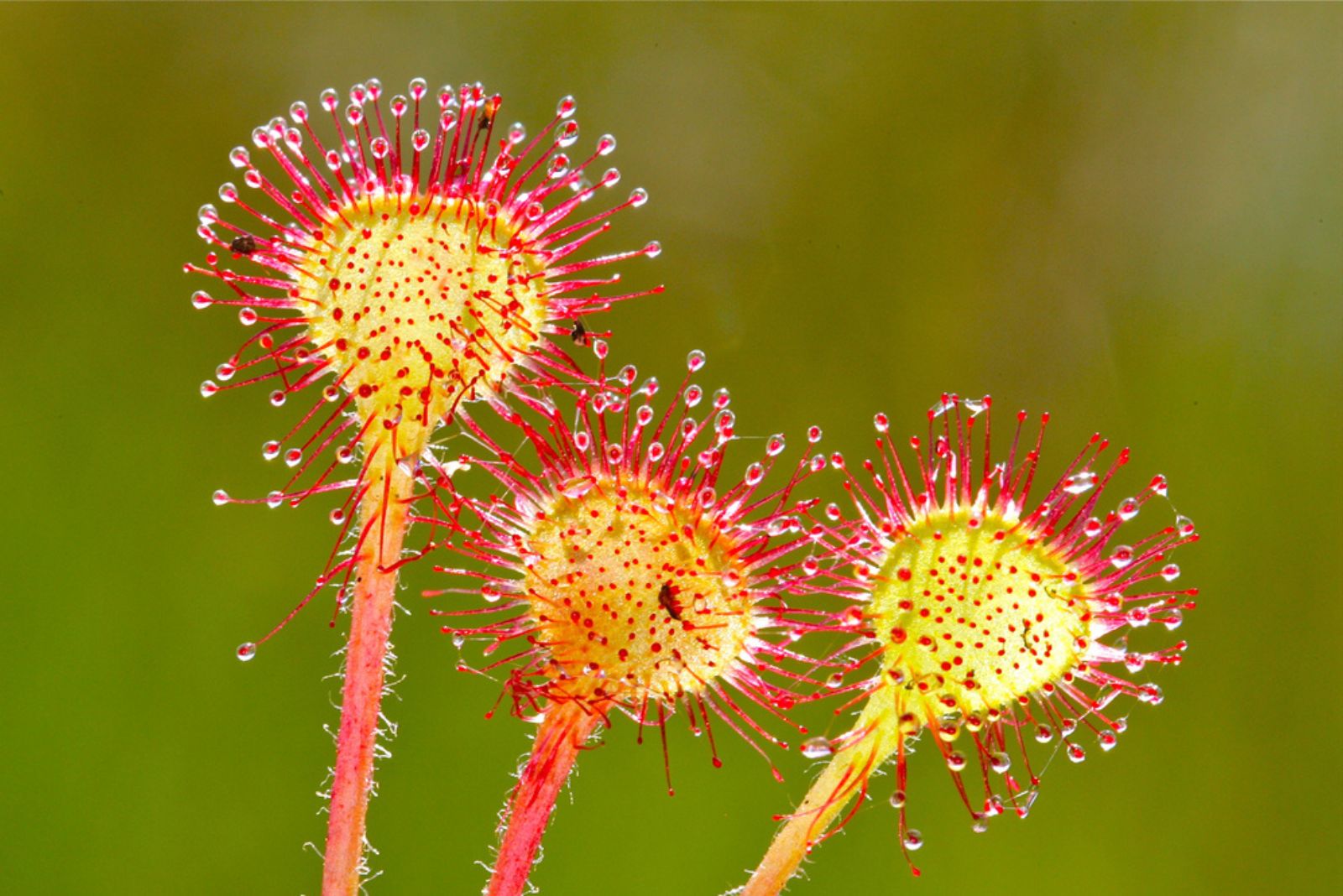If you want to add a little excitement to your indoor garden, let me introduce you to some carnivorous plants (they are sure to keep things interesting).
These little green predators aren’t just ordinary houseplants – I mean, you don’t see many plants that can actually hunt their food, do you?
I still laugh when I think about my first Venus flytrap. I was amazed by its cute jaws, but when it snapped shut on a fly, I almost jumped out of my seat. It honestly looked like a scene from an action movie!
But hey, there’s nothing to worry about because these plants are more fun than frightening. They’re low-maintenance and bring a wild touch to any space.
These carnivorous companions are sure to keep things interesting, so keep on reading to meet some!
1. American Pitcher Plant, Straight From The Jungle To Your Home
Pitcher plants love the outdoors, but you can keep them happy inside with a few tricks!
These tricks include lots of light. In summer, they need around 16-18 hours, which usually means adding some artificial light. During winter, try to give them at least eight to ten hours.
Keep the soil moist, too. Some people place their pots in a shallow dish of water to help, but make sure it’s only rainwater or purified water (yep, they are picky about their water as well). Use a soil mix of half moss and half sand, and you can use dried crickets to give them a little snack.
2. Butterworts Are Known For Their Sticky Leaves And Orchid-Like Blooms
Butterworts, or “pings,” are charming little plants with rosettes of sticky leaves and delicate, orchid-like blooms. They thrive with high humidity and bright light, so a sunny east or west window is perfect.
For soil, I would recommend you try a half-and-half mix of peat moss with sand or perlite, or even an orchid mix (since they like a light, airy base).
Avoid using tap water because it’s too salty for them. Keep the soil moist from below by placing the pot in a shallow dish of water so it absorbs moisture without wetting the leaves.
Butterworts snack on tiny soil creatures, so if you have other plants around, they’ll do most of the work feeding themselves!
Related: Tiktoker Shares An Amazing Insect Repellent Plant
3. Venus Flytraps Are Classic Carnivores That’ll Bring Drama To Your Space
Now let’s get into classic carnivores – Venus flytraps, just ideal for making your indoor garden a bit more dramatic.
The first thing you should know is that they need lots of light (about six hours of sun a day) or you can help them out with a plant light if your space is on the dim side.
For soil, I mixed half sphagnum with some horticultural sand and this hungry plant absolutely loved it (though you can also use half peat moss as well).
Keeping a water dish under their pot to maintain moisture is a must, and if your home is dry, a terrarium can create a flawless humid environment.
They need live food to thrive, so consider mealworms, bloodworms, or small crickets, or you can also go out to catch a few unsuspecting flies or spiders for a snack.
4. Sundews Can Serve As A Free Pest Control
And lastly, we have sundews.
These are also fantastic indoor carnivores, especially if you set them up in a terrarium. They’re super helpful if you have house flies or gnats (they’ll handle those pests themselves, so you get a free pest control, yay!).
For soil, a mix of sphagnum moss and perlite works great and keeps it moist. They need lots of bright, steady light, so a strong plant light can be really helpful for them indoors.
Pick one of these plants to make your plant collection truly stand out – or combine a few of them, just make sure they don’t bite each other!
Also read: Glow In The Dark Houseplants Are At Our Doorsteps





